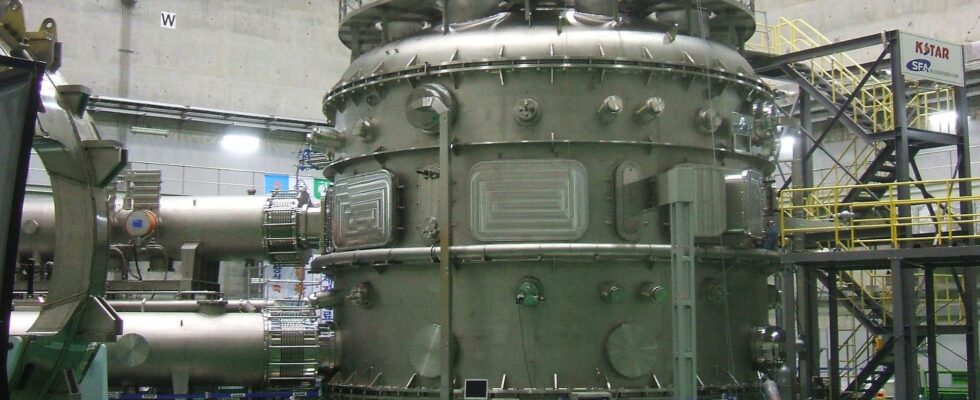Thanks to a hardware change, the KSTAR nuclear fusion reactor in South Korea manages to maintain a temperature of 100 million degrees for 30 seconds. A feat.
By resuming the functioning of the stars, nuclear fusion promises a clean, powerful and almost unlimited source of energy. But this promise lies in the distant, even very distant, future, as there are so many obstacles to overcome: the reactor must be both stable and powerful. However, nuclear fusion is so unstable that it is difficult to obtain enough energy over a sufficiently long time. We must reach the ignition threshold, to produce more energy than we insert.
In the sights, the ITER project: installed in France, and the result of a collaboration between several countries, its entry into activity is planned for 2030. Until then, other research projects make it possible to understand this technology. For example, the one located in South Korea is already very cutting edge. This “tokamak” – the term given to this specific type of nuclear fusion reactor – broke a record in 2020. Now, since the end of 2023, this reactor called KSTAR has seen its performance further increased.
A entertainer, and off we go!
Tokamaks resemble donuts in shape. The nuclear fusion reaction is obtained through the generation of a plasma (as in stars): the gas is heated, thanks to magnetic confinement, until the hydrogen begins to fuse. But this plasma must then be transformed into usable energy, hence the importance of stabilizing the conditions of the reactor over the long term, in addition to obtaining sufficient energy power to light more than a light bulb.

This is where KSTAR has greatly improved, late 2023, from a hardware standpoint. Crews were able to replace the diverter. Located on the edges of the reactor, a diverter can be compared to a kind of exhaust pipe : this device allows exhaust gases, impurities and ashes to be evacuated; in short, it serves to improve internal stability. In fact, it is placed inside the reactor, in constant contact with a plasma, and must therefore withstand incredible temperatures.
If the initial diverter was made of carbon, the new diverter, whose development began in 2018, is made of tungsten. This metallic material is known for its ability to withstand the highest heat. The diverter of the future ITER reactor will also be made of tungsten.
Thanks to this diverter capable of better supporting the plasma, the temperature of 100 million degrees could be extended for longer, up to 30 seconds. This is of course only the beginning. KSTAR scientists estimate that it would be possible to increase this duration by five, up to 5 minutes (300 seconds), towards the end of 2026.
Do you want to know everything about the mobility of tomorrow, from electric cars to e-bikes? Subscribe now to our Watt Else newsletter!
